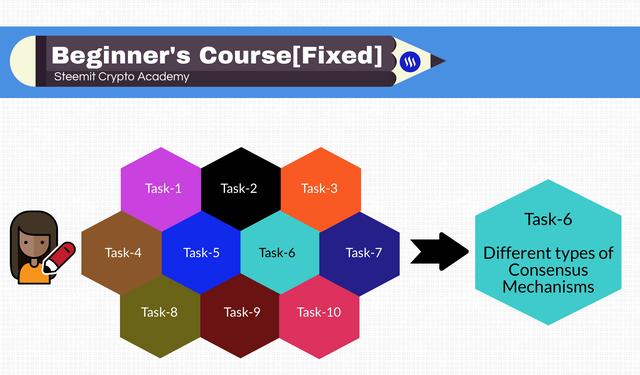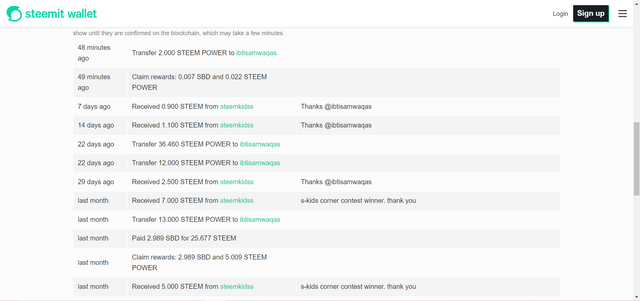What is the difference between PoW & PoS?
Proof of work
Proof of work (PoW) is the underlying system used to maintain the bitcoin blockchain. Proof of work provides consensus to the Bitcoin network and establishes Bitcoin as a viable decentralized currency. Proof of work, through extensive peer review, was selected by Satoshi Nakamoto to help establish Bitcoin as a digital currency that will endure for centuries. PoW allows miners to secure the Bitcoin network, collect transaction fees, and make contributions to the community by including block headers into the official blockchain. As such, miners are critical to the security of the Bitcoin network. However, mining can be expensive and PoW's relative success depends on whether there is a profit-motive for mining. A negative fee market means miners will stop participating in the network. This leaves only small pools with low computational power and large computational power (GPUs) in control of the majority of mining power. However, it has been shown that GPU based PoW algorithms have significantly lower centralization issues than CPU-based PoW algorithms. Furthermore, GPUs provide high efficiency gains when compared to CPUs, leading to significant electricity savings for mining pools.Proof of Stake
PoS (Proof of Stake) is an alternative consensus mechanism that uses "trusted third parties" (e.g. full nodes) to provide verification for transactions on the blockchain. In PoS, there is no concept of miners and thus no proof of work required. In PoS, all coins are minted as rewards for verifying transactions on the blockchain. Trusted third parties then randomly select these transactions and publish them on the blockchain, along with a “probability weight” that measures the amount of stake behind each transaction. Miners (or those who have enough stake) then choose which transactions to validate based on the probabilities they’ve assigned to each transaction.
Differences
Proof of work Uses energy intensive calculations to solve cryptographic puzzles in order to verify transactions on the blockchain while Proof of stake Requires trusted third parties to randomly select transactions on the blockchain and publish them on the blockchain. It also requires some time before any block is published to the blockchain. It also allows all coins to be minted as rewards for validating transactions. The main difference between proof of work and proof of stake is that in proof of work all coins are mined by users whereas in proof of stake all coins are minted by trusted third parties. In proof of stake, anyone can create new coins by investing their own money into the pool, whereas in proof of work users must put their energy into mining in order to validate transactions. This difference leads to higher levels of decentralization in proof of stake compared to proof of work. Proof of stake has less risk than proof of work because anyone can participate, whereas mining requires large capital investment and only very few can do it. As such, there is less risk that malicious users can launch 51% attacks and monopolize mining power in proof of work. However, if you consider this aspect you should compare the tradeoffs between the two methods before deciding which method to use. Also, note that while it is difficult to perform an attack on proof of stake , there is no similar level of difficulty for a miner to mine more than 50% of the blocks on the chain. Thus, miners need to constantly improve their algorithms in order to maximize profits and minimize costs.
Advantages & Disadvantages?
Advantages of PoW:
- High network security : It requires a lot of resources to perform an attack on PoW since a single entity cannot control more than 50% of the network’s hash rate. Additionally, it requires high capital investment in order to build ASIC miners which increases the barrier to entry for attackers.
- Privacy : While all transactions are publicly visible on the blockchain, there is no public ledger that keeps track of where your bitcoins go or who your real friends are. Transactions cannot be linked to any individual by analyzing addresses or identifying wallets. In fact, they are visible only to other people who have been assigned private keys for those addresses. Because these private keys are associated with public addresses, a balance can be computed from these public addresses without knowing any private keys. For example, someone could analyze all transactions in the Bitcoin network from one or more specific private keys and conclude that someone who holds those keys has been receiving bitcoin payments from another person who uses those same addresses.
Disadvantages of PoW:
- Centralization : A small number of entities have been able to build massive amounts of computing power by controlling vast networks of ASIC miners. As such, mining now becomes centralized as large companies like Bitmain become involved in order to increase their influence over the PoW algorithm. This further concentrates power and creates potential single points of failure for Bitcoin as an infrastructure. This centralization issue may also mean that large corporations will start favoring themselves when it comes to their interest in using Bitcoin as a medium of exchange, while at the same time negatively affecting users who hold less computing power and might not be able to participate in mining activities at all.
- Lack of consensus : By design, there is no perfect way to define who is entitled to add blocks to the chain and therefore create money out of thin air. What this means is that no individual can make changes to the system unless everyone agrees on them. Therefore, if some individuals don’t agree with some proposed changes, then it may not be possible to make these changes as they are likely to cause disagreements among others who do agree with the changes.

Source
Advantages of SoW:
- Byzantine Fault Tolerance : With PoW, if 51% of the miners support an attempt to mine a block, then it will become part of the blockchain and accepted by the community. In contrast, in SoW, any attempts to forge a block would not be accepted unless enough people can reach consensus on this action. If one party (i.e. miner) cannot agree with a majority of miners, then it would create a fork in the chain that they could use to perform malicious actions against others in the system.
- Transparency : There is no need for trusted third parties when performing transactions with SoW as every transaction can be seen by anyone at any time. The Blockchain does not rely on anyone and so there is no possibility of fraudulent activity happening behind the scenes. This transparency reduces the need for regulations or laws which must be put in place in order to avoid malicious behavior from companies or other individuals.
- Security : One of the main reasons why PoW was created was to ensure security for Bitcoin transactions . As mentioned previously, if 51% of the miners decide to collude then they can rewrite the history of transactions which is not something that can be easily avoided by anyone else.
Disadvantages of SoW:
- Consensus Algorithm : A feature of PoW is that everyone agrees on what is going on at any time and this makes it ideal for P2P networks like Bitcoin where nodes communicate directly with each other and there is no central authority that has control over what goes on. In contrast, when we look at other systems like IOTA where every node runs its own algorithm then consensus must be agreed upon by all nodes before transactions can be confirmed. In IOTA this means that every node must agree on a random number (random seed) which determines which path will be taken through the network and if more than 1/3 of the nodes are following a different path then a fork occurs and two different sub-chains are created. This may lead to transaction failures if more than 50% of the nodes do not agree with the chain being followed.
- Complexity : If we look at PoW and see how many computers have to compute hash functions, store block information and create blocks and process them then we realize that it requires an enormous amount of resources.
Scaling Capacity
Both PoW and Proof-of-Stake mechanisms use hashing functions to secure the ledger. Hashing functions require memory, disk, and electricity to be maintained in order to produce results. Proof-of-Work miners must be competitive with other miners and keep a good percentage of their time invested in order to maintain their system’s network health. Thus, mining has significant scaling costs. Similarly, staking has also high scalability costs. To enable faster block creation times, there is an incentive to rent hash power from those who already have it, so as to provide them with revenue for running the network. Renting hash power increases the security of the network by more than 100x while lowering its resource costs.
Staking creates additional challenges for nodes because of its required offline setup and cumbersome operations. A new approach is proposed which uses low-cost hosting solutions and hardware devices that are operated remotely by computer software that facilitates consensus mechanisms such as PoW and PoS. It offers higher security at lower resource costs than the two mechanisms mentioned above. This solution could help further decentralize the Internet by allowing users to participate in networks using only inexpensive devices, no minimum number of components, and without requiring internet access. The potential benefits are immense for small businesses, consumers, hobbyists, artists, farmers and schools. It can even potentially change the economics of operating online business by allowing all economic actors to utilize these systems without any initial investment or overhead. So, in conclusion, I have learned that both Proof-of-Work and Proof-of-Stake work fine but they do come with certain constraints that need to be addressed before widespread adoption can occur. That led me to the result that PoW is better in terms of Scaling capacity because it requires lower mining investment but it comes with much higher operational costs which might lead to fewer companies joining in on it and also at a much slower rate of scaling compared to PoS.
Staking creates additional challenges for nodes because of its required offline setup and cumbersome operations. A new approach is proposed which uses low-cost hosting solutions and hardware devices that are operated remotely by computer software that facilitates consensus mechanisms such as PoW and PoS. It offers higher security at lower resource costs than the two mechanisms mentioned above. This solution could help further decentralize the Internet by allowing users to participate in networks using only inexpensive devices, no minimum number of components, and without requiring internet access. The potential benefits are immense for small businesses, consumers, hobbyists, artists, farmers and schools. It can even potentially change the economics of operating online business by allowing all economic actors to utilize these systems without any initial investment or overhead. So, in conclusion, I have learned that both Proof-of-Work and Proof-of-Stake work fine but they do come with certain constraints that need to be addressed before widespread adoption can occur. That led me to the result that PoW is better in terms of Scaling capacity because it requires lower mining investment but it comes with much higher operational costs which might lead to fewer companies joining in on it and also at a much slower rate of scaling compared to PoS.
#CLUB100
#noplagiarism


